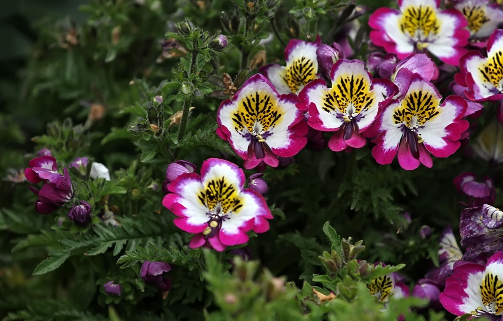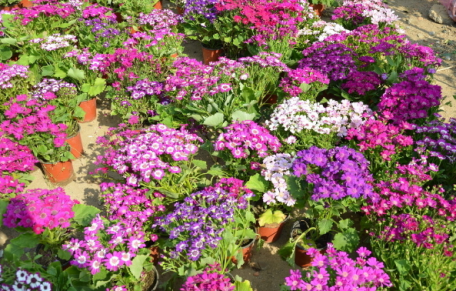The mode of reproduction of the flytrap:
The reproduction methods of flytrap are sexual reproduction and asexual reproduction, and asexual reproduction can be divided into leaf insertion method, plant division method and flower bud method.
one。 sexual propagation
Flytraps can be propagated by seeds or self-pollinated. But in most cases, artificial pollination will bear fruit. However, if the timing of pollination is not right, artificial pollination will not be successful, and the correct time for pollination should be the day after flowering.
two。 Asexual reproduction 1. Leaf insertion method
This is the most commonly used breeding method of flytrap, in which a petiole is inserted into the soil and new plants can grow.
two。 Split-plant method
When the flytrap grows lateral buds, as long as it is large enough to have complete roots, it can be planted separately from its mother plant.
3. Flower bud method
Sometimes because of the temperature difference, the flower bud of the flytrap becomes a plant.

Do you like such a strange, useful, interesting and harmless flytrap? Are you ready to start growing your own flytrap?
Propagation methods of flytrap
Sexual reproduction of flytrap
Flycatcher belongs to seed plants, which can be propagated by seeds or self-pollinated. But most artificial pollination will bear fruit. However, if the timing of pollination is wrong, the artificial pollination of the flytrap will not be successful.
The flowers of the flytrap do not mature at the same time. Often the stamens mature first and the pistils mature later. So it's no use pollinating it at this time. Because the pistil of the flytrap usually matures one day later than the stamen, the correct time for pollination should be the day after flowering.
If pollination is successful, the flower will wither within 1-2 days, and the ovary (the base of the pistil) begins to expand, and the fruit will mature after a few weeks.
A fruit of the flytrap usually has more than a dozen seeds, black and droplet-shaped.
The number of seeds has something to do with the health and size of the plant itself. Robust plants usually produce a little more seeds.
Because the seeds of flytrap are less resistant to preservation, they should be sown as soon as possible after harvest.
If you want to plant a larger flytrap, do not often let it blossom, because flowering is very nutrient-consuming. It can be cut off as soon as possible when the flower stem is extracted.
Asexual reproduction of flytrap
Leaf insertion method
It is a common breeding method of flycatcher, in which a petiole is inserted into the soil and a new plant can grow.
In late spring to early summer, when the flytrap is growing vigorously, after the flytrap is dug out of the soil, we can see its white petaloid petiole buried in the soil. Attach the traps of the flytrap to the petioles, peel them off together with the base of the white petioles, put them on the cultivation medium, maintain high humidity and give enough light, and new buds will emerge after a few weeks.
Split-plant method
When the flytrap grows lateral buds, as long as it is large enough to have complete roots, it can be planted separately from its mother plant.
Flower bud method
Sometimes because of the temperature difference, the flower bud of the flytrap will turn into a plant!
If there is a great temperature difference between day and night, the flower bud of the flytrap will be induced to transform into a new plant. At this time, the small plant can be cut off and planted in the soil, and it will be a new flytrap.
How to reproduce flycatcher planting method of flycatcher
Flytrap is a common green plant, it is cultivated indoors, it can eliminate flies in the home, but also can purify the air, but how should this flytrap reproduce? What is the planting method of catching flies?
How to reproduce flycatcher planting method of flycatcher
1. Leaf insertion of flycatcher
Leaf insertion is one of the common breeding methods of flycatch. when needed, its leaves can be removed from the mother plant, obliquely inserted on clean substrates such as water moss, and maintain proper humidity and mild sunlight. After about two months, it can grow new buds.
2. The flycatcher can propagate separately.
Split-plant propagation is also one of the important reproduction methods of flycatch. this plant grows some lateral buds in the growth process, and when the lateral buds grow big enough, take them off, then insert them directly into a new flowerpot, pour enough water, and slow down bacteria in a cool place. after about 20 days, the lateral buds will take root, and a new flytrap will appear.
3. The culture method of flytrap.
Flytrap culture needs loose and fertile soil, and there should be sufficient water during the growth period. Usually, some moss can be fresh on the surface of its flowerpot, which can reduce water evaporation. In addition, flytrap likes a semi-shady environment, so it can not be put in strong light, especially in summer, it should be placed in a cool and ventilated environment, and spray water to the leaves in time, otherwise it will make its leaves yellow. The efficiency of catching flies will also be significantly reduced.
- Prev

Matters needing attention in the culture of moth, butterfly and flower
Pruning the moth butterfly flower in the process of its growth, it should be pruned frequently in order to keep the plant beautiful. When the plant is transplanted into the pot, it is necessary to pick the heart of the plant once, so that it can separate more new branches, and then, in order to maintain the ornamental nature of the plant, the plant can be pruned many times.
- Next

Breeding method of melon
1, sowing method after the seeds mature harvest, at the same time exposure, put into paper bags, stored in a dry place. It is best to sow in the spring of each year. 2, cuttage or ramet propagation Every year in May is the flowering season of melon, this time can be removed from the lateral buds, cuttage in clean river sand
Related
- Fuxing push coffee new agricultural production and marketing class: lack of small-scale processing plants
- Jujube rice field leisure farm deep ploughing Yilan for five years to create a space for organic food and play
- Nongyu Farm-A trial of organic papaya for brave women with advanced technology
- Four points for attention in the prevention and control of diseases and insect pests of edible fungi
- How to add nutrient solution to Edible Fungi
- Is there any good way to control edible fungus mites?
- Open Inoculation Technology of Edible Fungi
- Is there any clever way to use fertilizer for edible fungus in winter?
- What agents are used to kill the pathogens of edible fungi in the mushroom shed?
- Rapid drying of Edible Fungi

